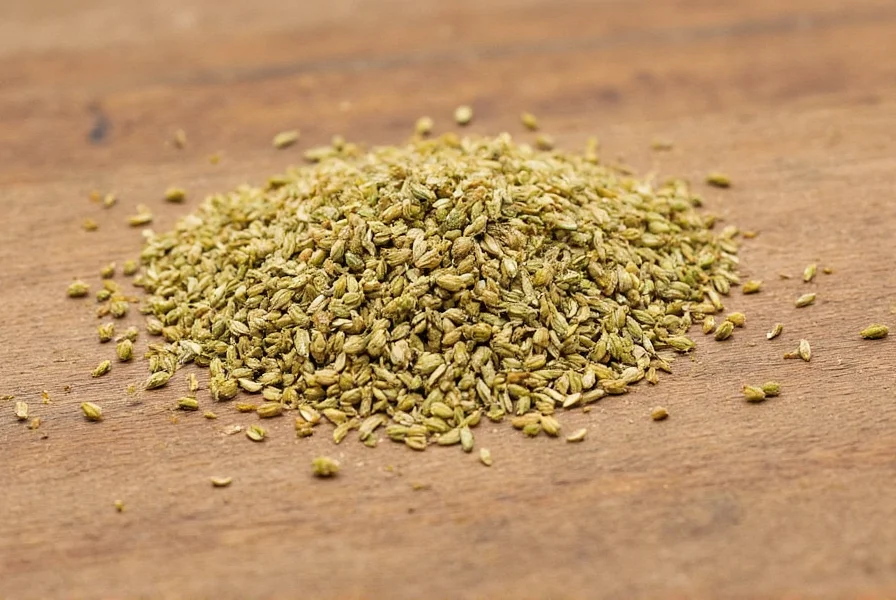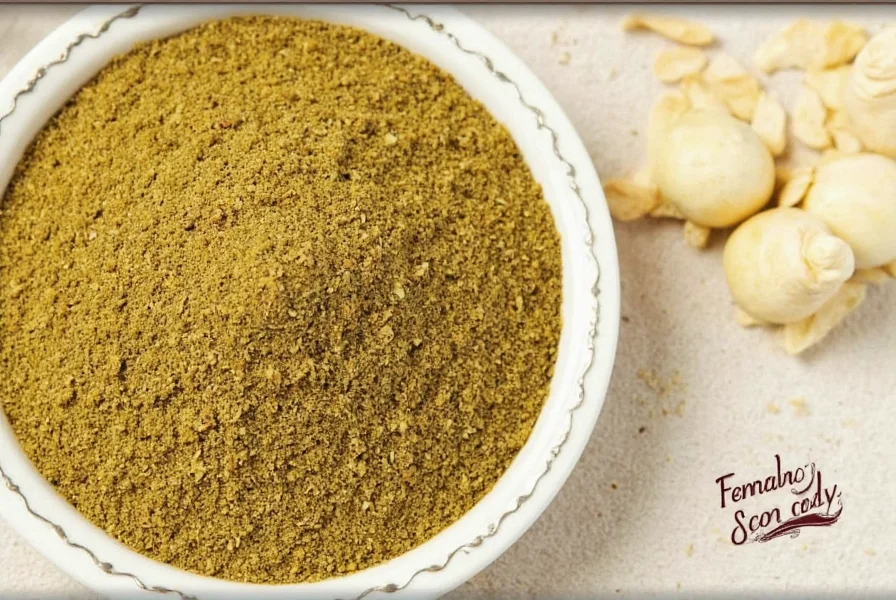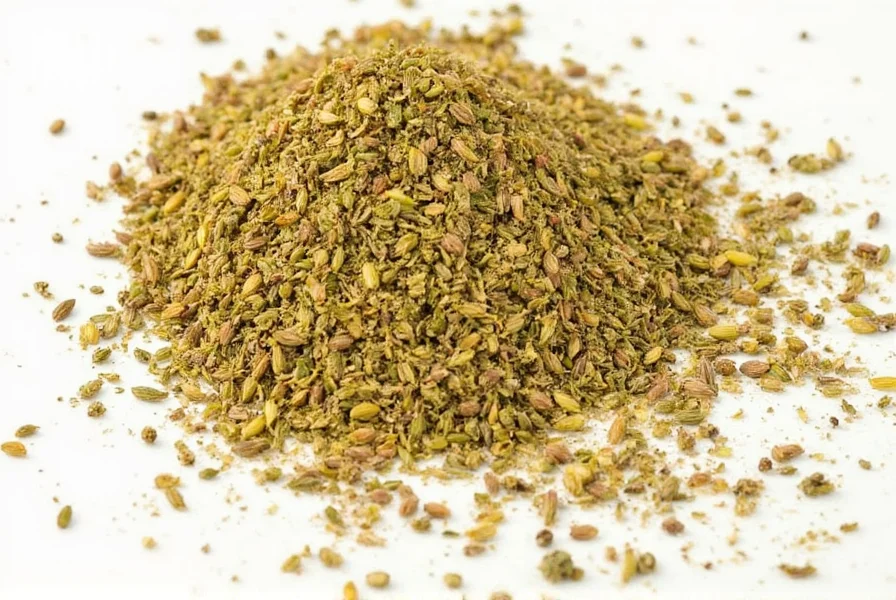Fennel spice represents one of the most versatile and historically significant flavoring agents in global culinary traditions. Unlike the bulbous vegetable portion of the fennel plant commonly found in produce sections, fennel spice specifically refers to the dried seeds harvested from the flowering plant. These small, oval-shaped seeds contain essential oils that deliver their characteristic flavor profile.
Understanding Fennel Spice: Botanical Background and Forms
The fennel plant (Foeniculum vulgare) belongs to the Apiaceae family, sharing botanical relations with parsley, carrots, and dill. While many people recognize the bulb form of fennel used in salads and roasting, the spice comes exclusively from the plant's seeds. Three primary forms of fennel spice appear in culinary applications:
- Whole fennel seeds - The most stable form with longest shelf life
- Ground fennel - More convenient but loses potency faster
- Fennel pollen - The rare "spice of angels" with intense floral notes
Harvesting occurs when the seed heads turn from green to yellow-brown, typically in late summer. Properly dried seeds develop their full aromatic potential, containing approximately 2-7% essential oil composed mainly of anethole, which creates the distinctive licorice flavor.

Flavor Profile and Sensory Characteristics
Fennel spice delivers a complex flavor profile that distinguishes it from similar spices. The dominant note comes from trans-anethole, the same compound found in anise and star anise, though fennel contains additional terpenes that create subtle variations.
| Characteristic | Description | Intensity Level |
|---|---|---|
| Primary Flavor | Sweet licorice/anise | ★★★★☆ |
| Secondary Notes | Earthy, slightly floral, citrus undertones | ★★★☆☆ |
| Aroma | Fragrant, warm, slightly medicinal | ★★★★☆ |
| Heat Impact | Flavor intensifies with cooking, becomes more rounded | ★★★☆☆ |
Unlike anise seed, which delivers a more one-dimensional licorice punch, fennel spice offers greater complexity with herbal and citrus undertones. When heated, the spice undergoes chemical changes that mellow the sharp licorice notes while enhancing the earthy, warm characteristics—making it particularly valuable in slow-cooked dishes.
Culinary Applications of Fennel Spice
Chefs worldwide utilize fennel spice across diverse culinary traditions. Mediterranean cooking features it prominently in Italian sausage blends, Greek fish preparations, and French herbes de Provence. Indian cuisine incorporates it into numerous curry blends and digestive teas, while Chinese five-spice powder often includes fennel as a supporting note.
Successful implementation requires understanding when and how to use fennel spice:
- Fish and seafood - Complements delicate flavors without overpowering (try with salmon or white fish)
- Meat rubs - Particularly effective with pork, duck, and lamb
- Bread baking - Classic in Italian sausage bread and Scandinavian rye
- Vegetable roasting - Enhances carrots, beets, and winter squash
- Preserves and chutneys - Balances sweetness in fruit preparations
For optimal flavor extraction, toast whole seeds in a dry skillet over medium heat for 1-2 minutes until fragrant before grinding. Add ground fennel early in cooking processes for infused dishes, but incorporate whole seeds later when you want distinct texture and bursts of flavor.
Fennel Spice Substitutions and Pairing Guidance
When fennel spice isn't available, several alternatives can approximate its flavor profile, though none provide an exact match. Understanding substitution ratios and limitations proves essential for successful cooking adjustments.
| Substitute | Ratio | Best Applications | Limitations |
|---|---|---|---|
| Anise seed | 1:1 | Baking, braises | Stronger licorice flavor, lacks earthiness |
| Dill seed | 1:1.5 | Fish dishes, pickling | More grassy, less sweet |
| Caraway seed | 1:0.75 | Rye bread, sauerkraut | More peppery, less sweet |
| Fennel pollen | 1:0.25 | Finishing dishes, delicate sauces | More expensive, floral rather than earthy |
Fennel spice pairs exceptionally well with complementary flavors that either enhance or balance its distinctive profile. Citrus elements like orange zest or lemon juice cut through the sweetness, while warm spices such as coriander and cumin create complex savory blends. For meat applications, fennel works particularly well with garlic, rosemary, and thyme.

Storage Methods for Maximum Flavor Retention
Proper storage significantly impacts fennel spice's shelf life and flavor intensity. Whole seeds maintain potency for 2-3 years when stored correctly, while ground fennel loses significant flavor within 6-12 months. The essential oils responsible for fennel's characteristic taste gradually evaporate when exposed to air, light, and heat.
Follow these storage recommendations to preserve fennel spice quality:
- Store in airtight glass containers away from light and heat sources
- Maintain consistent cool temperatures (below 70°F/21°C)
- Avoid storing above stoves or near windows
- Never keep spices in refrigerator due to moisture concerns
- Buy whole seeds and grind as needed for maximum freshness
To test if your fennel spice remains potent, crush a small amount between your fingers and smell. Fresh fennel should release a strong, sweet aroma immediately. If the scent is faint or musty, it's time to replace your supply.
Nutritional Profile and Traditional Uses
Fennel spice contains several beneficial compounds beyond its flavor contributions. Per tablespoon (6g), fennel seeds provide approximately:
- 20 calories
- 1g protein
- 1g fat
- 3g carbohydrates
- 2g dietary fiber
- 10% of daily manganese needs
- 6% of daily calcium requirements
- Significant iron and magnesium content
Traditional medicine systems have utilized fennel for centuries, particularly for digestive support. Many cultures incorporate fennel seeds after meals to aid digestion and freshen breath. Scientific research suggests fennel contains compounds with antioxidant and anti-inflammatory properties, though more studies are needed to confirm specific health benefits.
Signature Recipe: Mediterranean Roasted Chicken with Fennel
This simple preparation showcases fennel spice's versatility in enhancing poultry dishes without overwhelming other flavors.
Ingredients:
- 1 whole chicken (3-4 lbs)
- 2 tbsp whole fennel seeds
- 1 tbsp olive oil
- 3 garlic cloves, minced
- 1 lemon, zested and juiced
- Salt and freshly ground black pepper
- 1 onion, quartered
- 4 fennel bulbs, quartered
Instructions:
- Preheat oven to 425°F (220°C)
- Dry-toast fennel seeds in skillet for 1-2 minutes until fragrant
- Grind toasted seeds and mix with olive oil, garlic, lemon zest, salt, and pepper
- Rub mixture under chicken skin and over entire bird
- Place chicken on bed of onion and fennel bulbs in roasting pan
- Roast for 60-75 minutes until internal temperature reaches 165°F (74°C)
- Rest 10 minutes before carving
The fennel seeds infuse the chicken with subtle sweetness while complementing the natural flavor of the fennel bulbs underneath. This dish demonstrates how using both the spice and vegetable forms of fennel creates layered flavor complexity.
Frequently Asked Questions About Fennel Spice
What's the difference between fennel seed and fennel spice?
Fennel seed refers specifically to the whole, dried seeds of the fennel plant, while fennel spice can refer to either the whole seeds or the ground form. When recipes specify "fennel spice," they typically mean the ground version, though professional chefs often prefer toasting and grinding whole seeds immediately before use for maximum flavor.
Can I substitute fennel spice for anise seed in recipes?
Yes, you can substitute fennel spice for anise seed in a 1:1 ratio, but expect some flavor differences. Fennel offers a more complex, earthy profile with subtle citrus notes, while anise seed delivers a stronger, more singular licorice flavor. In baking applications, fennel may require slight adjustments to sugar levels since it's less sweet than anise.
Why does my fennel spice taste bitter?
Bitter fennel spice usually indicates one of three issues: the seeds were over-toasted (they should only be toasted until fragrant, not browned), the spice has degraded due to improper storage, or you've used too much in your recipe. Fennel's essential oils can turn bitter when exposed to excessive heat or when the spice has passed its prime.
How can I use fennel spice in sweet recipes?
Fennel spice works surprisingly well in sweet applications when used judiciously. Try adding 1/4 teaspoon to apple pie fillings, pear crisps, or citrus-based desserts. The spice complements stone fruits particularly well and can enhance chocolate recipes when combined with cinnamon and cardamom. Remember that fennel's licorice notes intensify when paired with sugar, so start with small amounts.
Is fennel spice safe for everyone to consume?
Fennel spice is generally recognized as safe for culinary use by most people. However, individuals with known allergies to plants in the Apiaceae family (including carrots, celery, and parsley) should exercise caution. Pregnant women should consume fennel spice in normal culinary amounts only, as medicinal quantities may have uterine stimulant effects. As with any spice, moderation is key.











 浙公网安备
33010002000092号
浙公网安备
33010002000092号 浙B2-20120091-4
浙B2-20120091-4